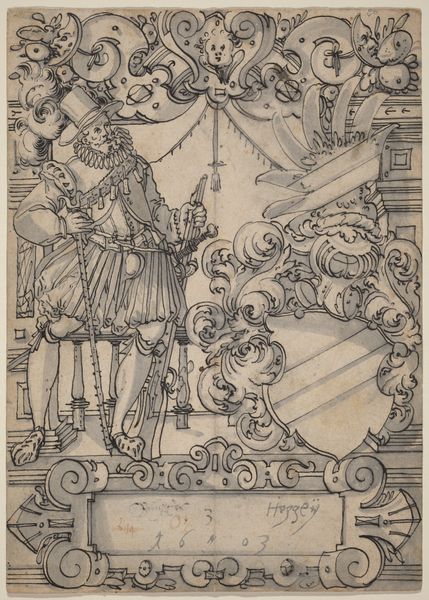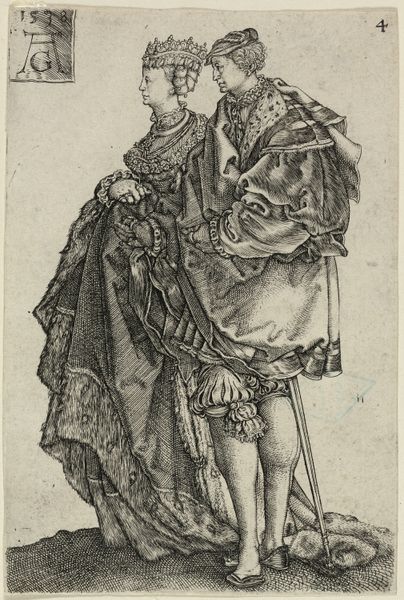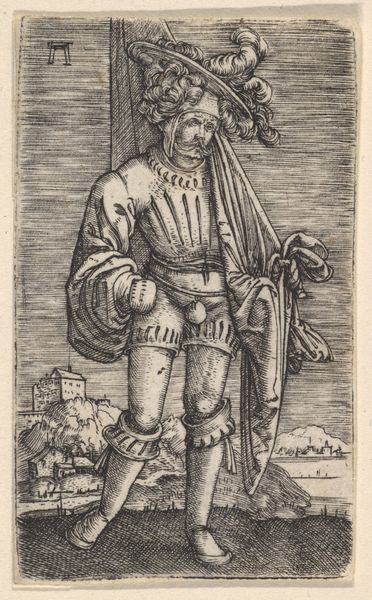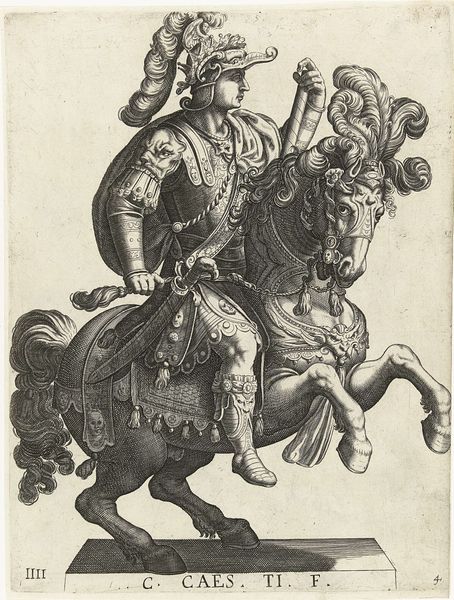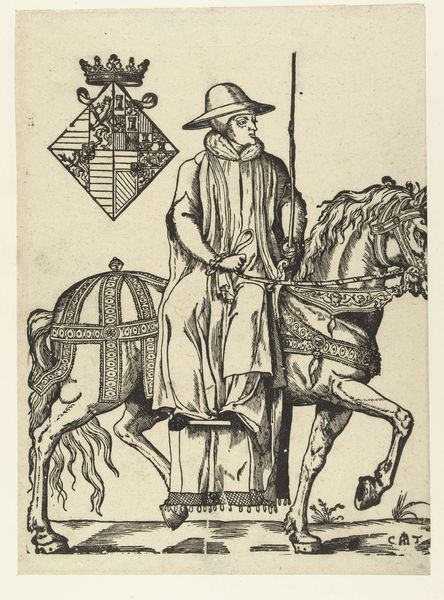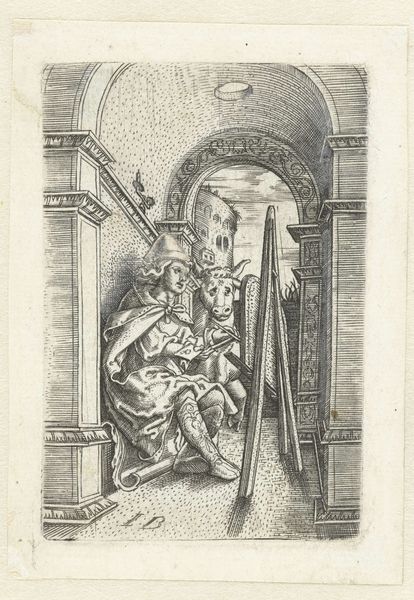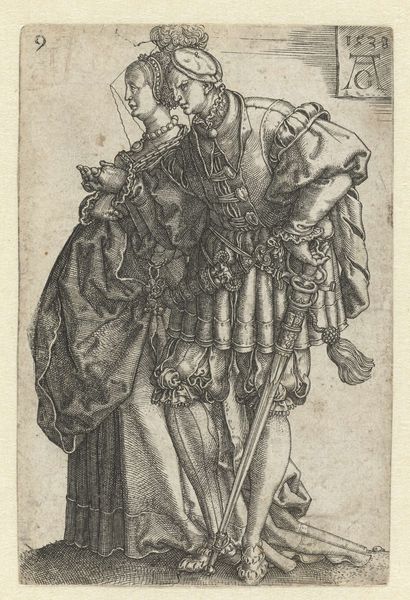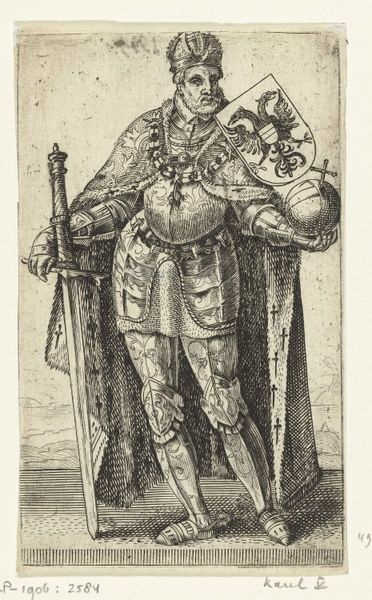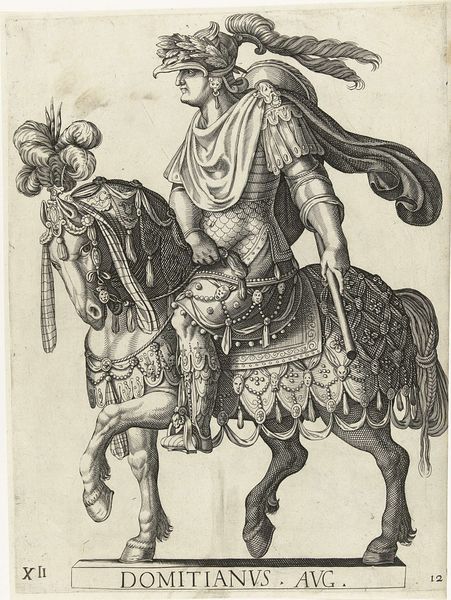
Verso of a Sheet with Philip the Belle, from The Genealogy of Emperor Maximilian I 1509 - 1512
0:00
0:00
drawing, print, ink
#
portrait
#
drawing
# print
#
figuration
#
11_renaissance
#
ink
#
line
#
history-painting
#
northern-renaissance
Dimensions: Sheet: 8 1/16 × 7 1/16 in. (20.5 × 18 cm)
Copyright: Public Domain
Curator: Let's turn our attention to "Verso of a Sheet with Philip the Belle, from The Genealogy of Emperor Maximilian I," dating from 1509-1512 by Hans Burgkmair, currently residing at The Met. It's rendered in ink. Editor: What strikes me first is the almost absurd level of detail! Look at the folds in his clothing, the intricate work on his crown and armor. It has such weight, doesn't it? Almost a comedic heaviness. Curator: That detail comes from its intended use as a print. Prints during the Renaissance required careful planning and complex execution to transfer images onto a block that could then be printed multiple times, circulating images widely. The medium of ink and print here signals broader issues of labor, technology, and power relations of image production at the time. Editor: Absolutely. And that circle containing the scale—a bit on-the-nose as a symbol of justice, isn't it? Although, within this very meticulously made print there is some roughness, and scribbled areas as if testing the pen. As though, like anyone creating a portrait, Burgkmair might be testing ideas. Curator: Yes, this print does indeed appear on the verso of another study, meaning that materials are here being used efficiently. What also seems to be tested here, symbolically, is lineage. Note, for example, the use of Philip's coat of arms in relationship to scales of justice and kingship. How does inherited aristocracy hold up to natural justice? Editor: Hmm, I think that question—or perhaps the illusion of a question—was one the monarchy wanted to encourage people to explore and discuss during its day. And now ours, as well. Look how timelessly modern a question is: Who holds power and what gives them right? Curator: Well, thinking about this as a commodity designed for circulation, that becomes clearer. A symbolic figure made available for study, assessment, maybe even playful argument over the nature of sovereignty itself. Editor: Indeed, and perhaps, looking at the rough spots and the intense focus on ornamentation can guide us on those kinds of argument even now. Thanks for walking me through this. Curator: My pleasure. Considering its construction really does underscore the complex circumstances behind it all.
Comments
No comments
Be the first to comment and join the conversation on the ultimate creative platform.

